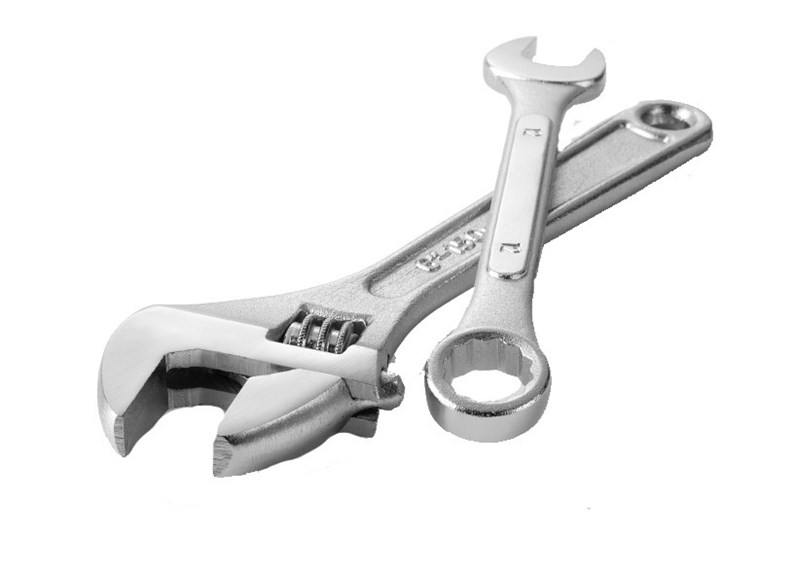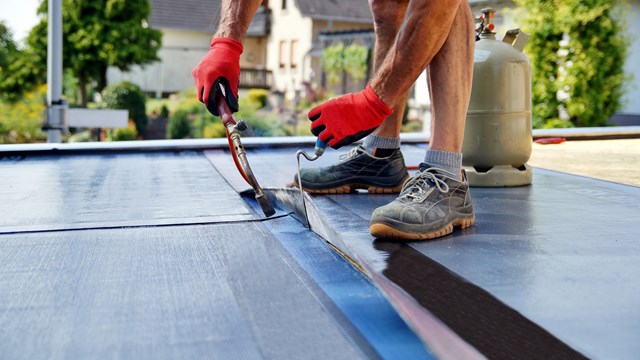Summer's here, and most of us couldn't get along without air conditioning, especially when the temperatures reach into the steamy 80s and 90s. Many people know the minimum about their air conditioning systems—if anything goes wrong, they call their air conditioning repair person.
But if you're a member of a co-op board or condo association, or a building manager, while you're certainly not expected to know as much as a full-time technician, you should definitely know a few basic things about your air conditioning system—if only so you can speak the same language as your contractor, should something need fixing.
A Wide Array of Types
To begin with, there are many brands of air conditioning equipment out there. For central AC systems, some of the more well known are York, Carrier, Amana, Trane, Lennox, or American Standard. For room air conditioners, some names you might recognize are Carrier, Frigidaire, Friedrich, and Fedders.
According to Al Toscano of Jayson Oil Co. Inc. in Union, it's usually better to work with a contractor who gives the customer a choice. "If they're selling only one brand, they can have an ulterior motive," he says.
Just as there are a variety of brands, there are a variety of types of air conditioning systems—some of them overlapping—that are options for a co-op or condo. There are two basic types—window air conditioners and central AC—but there are also several sub-types of central systems.
Central air conditioning "split systems" have some components—such as the compressor and condenser coil—outdoors, and some indoors, such as the evaporator. You've probably seen some of these humming quietly behind outdoor air conditioning enclosures. The system either makes use of the furnace's forced-air blower to move the chilled air, or has its own blower unit. There are also some ductless (also known as "mini-split") systems, where an outdoor compressor serves several, smaller evaporator coils that are installed on exterior walls.
The most common system type nowadays, says Toscano, is "DX," or direct expansion, in which heat is transferred by the direct expansion of the refrigerant itself. Many DX units are packaged units, rather than split systems. This means that the actual air-conditioning components, rather than being split, are contained in one enclosure, usually on the roof or in a utility closet.
In a chiller-based system, on the other hand, the room's air conditioning unit itself contains no refrigerant. The refrigerant is in a chiller, which is located remotely. The chiller cools water, which is then pumped to the air conditioner to cool the space. Chuck Cistoldi, of Goodman Co. LP/Amana Heating and Air Conditioning in Boston, says that one reason a DX system is more typical is that "in a chiller-based system, if the mechanical system fails, everyone in the building has no air conditioning [until it's fixed]."
Heat pump systems, which basically act as both heaters and air conditioners, are yet another option. In cooling mode, they expel heat from the refrigerant to the outside; in heating mode, they extract heat from the outside and use it to heat up the refrigerant. However, heat-pump systems are more efficient in the southern part of the country than in our area, says Joe Marazzo, vice president and CEO of KeySpan Home Energy Services in Warren, N.J.
And, of course, there are also window air-conditioning units. In general, central AC is more efficient than window AC, according to the American Council for an Energy-Efficient Economy (www.aceee.org). Still, there are many highly efficient window units from very reputable manufacturers on the market.
Figuring Efficiency
No matter what type of air conditioning your building has, there's a quick and easy way to gauge its efficiency. If you have central air conditioning, look at the Seasonal Energy Efficiency Rating (SEER); if you have window units, look at the Energy Efficiency Rating (EER).
Twenty years ago, a SEER rating of 7 or 8 was common for a central system. Nowadays, some units can go up to 19.5, and the government keeps mandating higher ratings. As for window units, they average around 10 EER.
"Higher-efficiency units will usually be more expensive—you'll have to lay out more money upfront for a system with a 14 SEER rating than for one with 10 SEER," says Toscano. "But in the long run, it will be a lot cheaper to operate, and a lot quicker."
If you have an older building that has only used window units in the past, and you want to convert to central air conditioning, high-velocity systems such as those made by Unico may an option to explore. In these systems, the ductwork is much smaller in diameter, and can be easily threaded through existing openings, such as old steam pipes that are no longer used. The air supply tubes have soundproofing to mitigate the sound that a rush of high-speed air can make.
The Installation
Installing these systems will make very little change in a building's aesthetics. For these reasons, high-velocity systems and the aforementioned ductless systems are both used to retrofit historic homes, such as the brownstones in Hoboken, or in New York's Greenwich Village and Brooklyn Heights.
If you decide to stick with window air-conditioners but find you need to buy new ones, your local air conditioner contractor can make that easy for you, too. Many of them give condo associations a lower rate on window units if they buy them in bulk. The association can negotiate on behalf of its members to get a good deal for all its members.
In addition to central air conditioning and individual room air conditioners, some buildings may have individual central air conditioning units, meaning units that condition an entire apartment, but only that apartment. This may be built into the building, but as far as retrofits are concerned, says Cistoldi, "Most condo associations won't allow that, because if an apartment owner wants to put in central air conditioning, they'll have to put a condenser unit someplace—on the roof or outside." Obviously, it would be inconvenient to have 10 people putting their own condensing units outdoors.
"The only way you could [retrofit such a unit] is to use a packaged unit with, for example, one large unit in the living room and smaller unit in the bedroom," says Marazzo. In any case, says Cistoldi, the energy use from such units would have to be metered by the co-op or condo, then passed on to the unit owners as a fee.
Improved Technology
Whatever system you choose, air conditioning technology has seen many improvements over the years. These include not only the aforementioned increased energy efficiency, but also better pollution controls and heavy-duty filters, such as HEPA filters, that can cleanse the air of pollen, dust, mold and other allergens. Systems today have more coil capacity—the coils that transfer cooling are physically larger.
Also, air conditioners today are much quieter. Years ago, says Marazzo, "if you were outside [near] an air conditioner, you'd know it."
From the maintenance point of view, checking up on individual room air conditioners is easier, since these are simpler units. The basic tasks are, first, checking the filters, and then cleaning, and seeing whether there are any parts that may be wearing out. Of course, maintaining individual air conditioning can be more of a headache for the contractor, because there are more physical units that need to be maintained.
Maintaining central air conditioning is more complicated. Among the contractor's responsibilities are keeping the condenser coil clean, checking the operating pressure, making sure any belts are not about to crack, making sure the tubing doesn't get clogged, checking the refrigerant level, and making sure the system is pumping properly, among other things.
If there's a leak and you're slightly down on refrigerant, says Marazzo, "You won't know it, but your compressor will have to work harder. A unit that is supposed to last 20 years will only last 15."
Bigger Isn't Always Better
If users are totally uninformed, they can make many mistakes. One of the biggest ones, says Cistoldi, is simply buying a unit that's too large. "Bigger is not always better—you should measure the room," he said. "Another thing that people tend to do is when they have central air conditioning, they turn the system on and off [when they leave the room or apartment], rather than lowering and raising the thermostat. What it does when it's turned on and it's been off all this time, you get a blast."
Of course, all air conditioning service contracts are different. But here are some of the items that the people we interviewed mentioned as part of their check-ups:
• Checking electrical connections
• Seeing whether the amperage is right
• Blowing out the condensate lines
• Making sure the pumps work properly
• Putting gauges on refrigerant lines to check pressure
• Checking electrical relays
• Checking filters for dirt
• Checking fan blades
• Checking the disconnect switch
• Checking the blower motor
• Doing preventive cleaning and oiling
• Checking solenoid valves, which control the flow of fluid.
Sound complicated? It probably is. But at least now you'll have a better appreciation of what your air conditioning contractor does—as well as being more able to make informed choices about your own AC system and its needs.
Raanan Geberer is a freelance writer living in Manhattan.







Leave a Comment